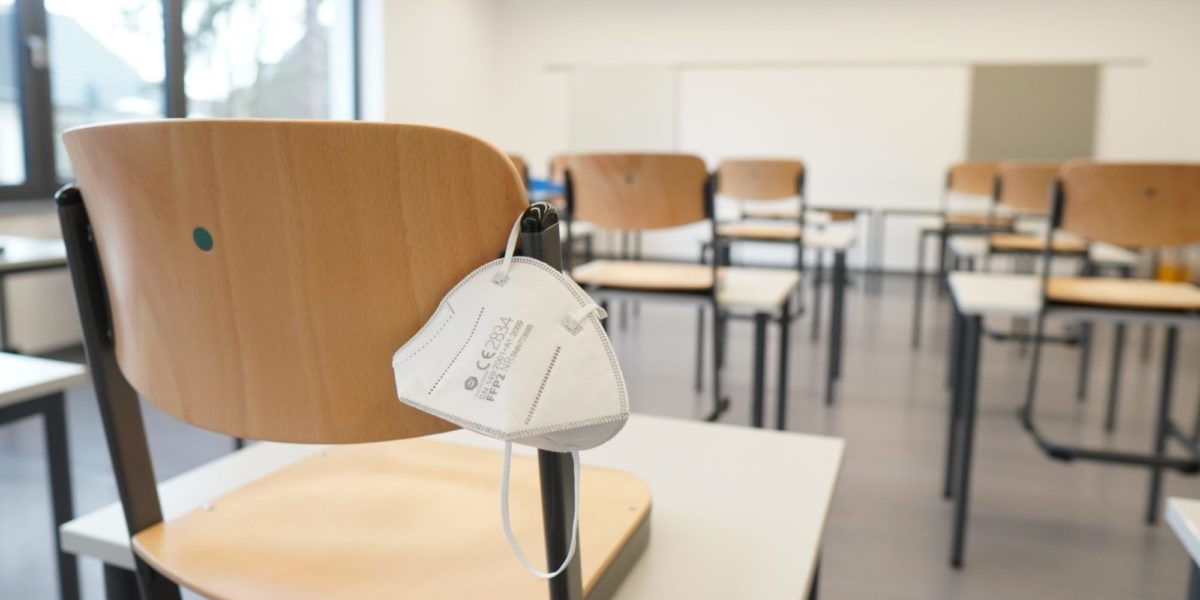Stacey Rudderham feels like the Nova Scotia government has given up on keeping kids safe in schools amidst the largest wave of COVID-19 to date.
Rudderham helps moderate the 23,000-member Facebook group “Nova Scotia Parents for Public Education (NSPFPE).” The group started before the COVID-19 pandemic, but it has become a central hub for families to share updates on rapid tests, school protocols, close contacts of positive cases and other pandemic information.
Now, with the province suspending contact tracing for schools, NSPFPE’s members are taking matters into their own hands.
The group’s administrators have created a COVID-19 reporting tool to which students and families can upload their results, in an effort to determine where hotspots of the virus may be popping up.
The lack of contact tracing in schools could lead to fewer reported cases and a greater risk of exposure to the wider population, while not giving Nova Scotians an accurate and up-to-date picture of how safe from COVID-19 the province’s schools are.
When N.S. premier Tim Houston announced a delay to in-person learning on January 5, he noted he struggled with the decision, knowing that for many kids schools are a safe haven from abuse, food insecurity and poverty. Houston characterized those dangers Nova Scotia children face as a “terrible reflection on our society” not as indicators of failure for his government.
In Rudderham’s view, schools can’t be expected to resolve every social ill, especially considering Nova Scotia’s high childhood poverty rates.
Even before the Christmas break, the activist parent observed both escalating staffing shortages and high absenteeism among students. Rudderham says there simply weren’t enough substitute teachers to replace those off due to COVID-19 protocols. Her children, who are in French immersion classes, were saddled with a substitute teacher who couldn’t speak French.
Further, Stacey Rudderham adds that there is more than competent pedagogy at stake in the current crisis.
“There is an emotional impact on the kids when they discover their teachers are sick or missing,” she says.
In Ontario alone well over 2000 kids could be hospitalized
The World Health Organization tallied 9.5 million new cases of COVID-19 around the world over the past week. That’s a 71 per cent spike from the week before.
In some provinces children are preparing to return to in-person classrooms, and in many of those most children under 12 aren’t yet eligible for a second dose of COVID-19 vaccine.
A number of provinces have delayed a return to in-person learning until at least Jan. 17, and most of those are opting instead to use virtual learning in the interim. Quebec is an exception. For the time being, it is extending the winter holiday by a week, and not moving classrooms online.
In December, infection control epidemiologist Dr. Colin Furness wrote Toronto Public Health to warn of the risk of widespread exposure to COVID-19 if students were to go back to school without major improvements to health and safety factors such as ventilation, installation of Hepa filters, reduced class sizes, and masking.
Furness estimates that as many as 2,750 children in Ontario alone will be hospitalized during this fifth wave of COVID-19. Those sick children will further strain the province’s taxed health care resources. Thousands of surgeries, some of them potentially life-saving, and other medical procedures, including cancer treatments, have already been postponed. We have not yet seen the Omicron variant’s peak.
According to Furness, most cases of (pre-Omicron) COVID in children were mild, although up to 35 per cent per cent of such cases did result in long-haul COVID.
In the United States, hospitalizations for COVID-19 among children under 5 are reaching unprecedented levels. They have now risen to in excess of 4 out of 100,000 U.S. children.
Furness warns that if schools re-open before necessary health and safety protocols are implemented, “all students attending schools and daycares in Ontario will become exposed to COVID-19 within a few days of opening.”
Dr. Raywat Deonandan, an epidemiologist and associate professor at the University of Ottawa, shares that view.
For Deonandan, not only do we need to reduce COVID-19 transmission in schools, we must also reduce the impact schools could have on accelerating the pandemic. Ultimately, it’s all about keeping unvaccinated children out of hospitals.
Deonandan says classrooms, when they do open, will contain “the single largest contiguous block of unvaccinated people.”
In addition to improvements to schools’ physical plants, Deonandan urges provincial governments and school boards to institute symptom screening and opportunities to be immunized in schools. As well, they must provide all students and staff with high quality masks.
Like Furness, Deonandan advocates for reduced class sizes. He also wants to see prioritized booster doses for all staff (something Ontario’s Doug Ford government has, so far, resisted), and urges that the timeline for kids aged 5-11 to receive their second doses be accelerated.
Nova Scotia’s chief medical officer of health, Dr. Robert Strang, has a different take on education. He argues that schools are the safest place for children.
The province’s teachers have a different view.
Paul Wozney, president of the Nova Scotia Teachers’ Union (NSTU), points out that Strang doesn’t work in schools. The research on which Strang has based his opinion “does not disclose the real truth” about how COVID-safe schools actually are, Wozney says
Wozney points out that when teaching staff will have to be absent due to illness, or the need to self-isolate after exposure to the virus, schools will become “a rodeo of ever-changing people in front of students.”
If the province were to keep classes virtual, for now, Wozney says, teachers could at least give students “some meaningful learning”.
“We know now with the explosive spread of Omicron that doing the same things the same way is going to result in even wider spread and higher climbing case counts,” Wozney warns.



